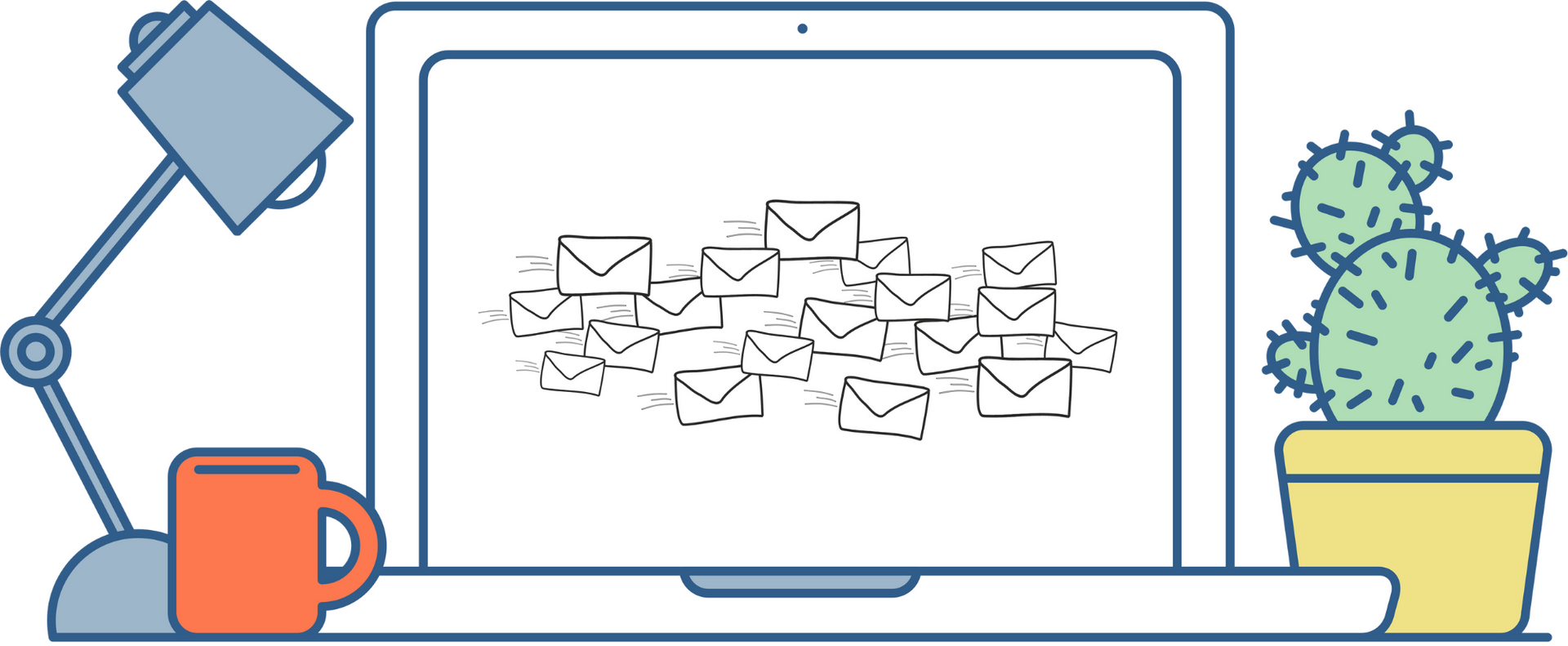How to Write a Cold Email That Actually Gets Responses
Cold emails are a powerful and effective tool in the marketing toolbox. But, by their very nature, cold emails start off at a disadvantage. After all, you're sending an unsolicited message to someone with no prior relationship to your business. In other words, cold emails are easy to ignore.
Fortunately, there are proven techniques for building a successful cold email campaign. Likewise, there are some clear missteps you should avoid.
First things first—before you begin drafting the email message that will be used in your campaign, you need to identify your target audience and build your list of leads. (Click here to learn how to build a powerful email list that's packed with potential.)
Once you’ve clearly defined your target audience and used that data to build a solid email list, you can start creating the message itself.

Create a Killer Subject Line
The subject line of any email—especially a cold email—is often the deciding factor for whether the message is opened or deleted straightaway.
The subject line of your cold email should not only be interesting, it should instill a bit of curiosity. But keep it short. The best subject lines are less than nine words, or 60 characters. Anything longer will cause the recipient to lose interest. And if they’re reading on a mobile device (which is highly likely,) they may not even be able to see the entire subject line if it’s too wordy.
Be descriptive in your subject. That doesn’t mean you need to tell your whole story in the subject line, but give the reader enough information to prompt them to open the message. Avoid generic language.
While it’s tempting to use catchy language or seasonal puns, a subject like “Hot summer deals!” is indistinct and doesn't tell your reader much about what they’re going to find in the body of your message. "Salsey" language in your subject line will come across as spammy and impersonal.
Instead of buzzwords and puns,
use normal, conversational language in your subject line. A subject like, “Let’s talk about your
kitchen remodeling project,” is far more engaging and descriptive, plus it gives the reader some idea of what they’ll find when they open your message.
Personalize the Opening
Okay, so now you’ve written a great subject line that's going to prompt the recipient to open your email. You’re over the first hurdle, but the race isn’t over. Your next challenge is getting the recipient to actually read the body of your email.
The first step here is easy: personalize your greeting. This shouldn’t be overly complicated. “Hi Jim,” or “Hello Greg, I hope you’re having a great summer,” are appropriate greetings.
A vague greeting of just “Hello” or—even worse—no greeting at all, will not inspire the recipient to keep reading. Worse yet, it may result in your message being mistaken for spam.
Avoid Introductions
Don't spend a lot of time (or any at all, really,) introducing yourself, particularly early in the message. Obviously, this seems counterintuitive since the goal of your cold email is to get prospective customers to contact you. But the truth is, at this point in the game, the email recipient doesn't really care who you are.
Rather than wasting precious email space introducing yourself or sharing unnecessary information about your company, focus on how your company can help the recipient. This is what the recipient really cares about.
Be friendly but succinct. Identify the problem/issue/need—Is your kitchen outdated and ugly?—then suggest a solution—We do the best kitchen remodels in the city.

Use Storytelling
So now you've drafted an email with a magnetic subject line, a personalize greeting, and a first paragraph that addresses the recipient's needs and how you can help. What's next?
If your lead has made it past the first paragraph of your email, you've reached a critical point! This is your chance to convert your lead to a prospect. But you won’t do this by simply rambling off a sales pitch. Instead, emphasize the value you can bring to the email recipient. Use storytelling to set up a scenario in which you can solve their problems or answer their questions.
Point out how your product or service will benefit the reader. Don’t make a list of features or vaguely summarize your service. Be specific and make the lead the center of attention in your message.
Keep the body of your message relatively short. Studies have shown the best click-through rates come from emails that are about 200 words, or 20 lines of text.
Close with a Call-To-Action
Now comes the moment of truth. The CTA (call-to-action.) This is where you invite the recipient to take the next step.
CTA's should be short. Ideally, one sentence, two at the most. Your call-to-action should request a simple action from the reader. Don’t make it too complicated or inconvenient.
“How about a free 10-minute call to discuss your kitchen remodeling project?” is a simple CTA that invites the lead to take a quick and easy action, selecting whether or not they want to have a phone call.
Avoid CTA’s that seem demanding or overly salesy.
Include Your Email Signature
Bring the cold email to conclusion by including your signature. Make it clear and clean, with all the necessary contact information. Leave out any superfluous information. You just need the basics here. The goal is to appear professional and trustworthy.
While HTML signature blocks usually look great, be aware they can cause issues with delivery and may not format properly in every email. It’s generally better to create a simple text signature and avoid HTML for cold emails.
Adjust as Necessary
The great thing about cold email campaigns, (or any marketing campaign, for that matter,) is that you can pivot, adjust, and change things when needed.
Draft your first cold email campaign and get it out the door. If the response rate is not what you want it to be, examine your target audience and make adjustments to your list, and make tweaks to your email message, if necessary.
Remember, the goal of your cold email campaign is to reach the right leads with an engaging email that encourages them to learn more about your company.
Get the Latest Content in Your Inbox
Want to be the first to know about new content? Sign up to get our weekly blog posts sent to your email!





